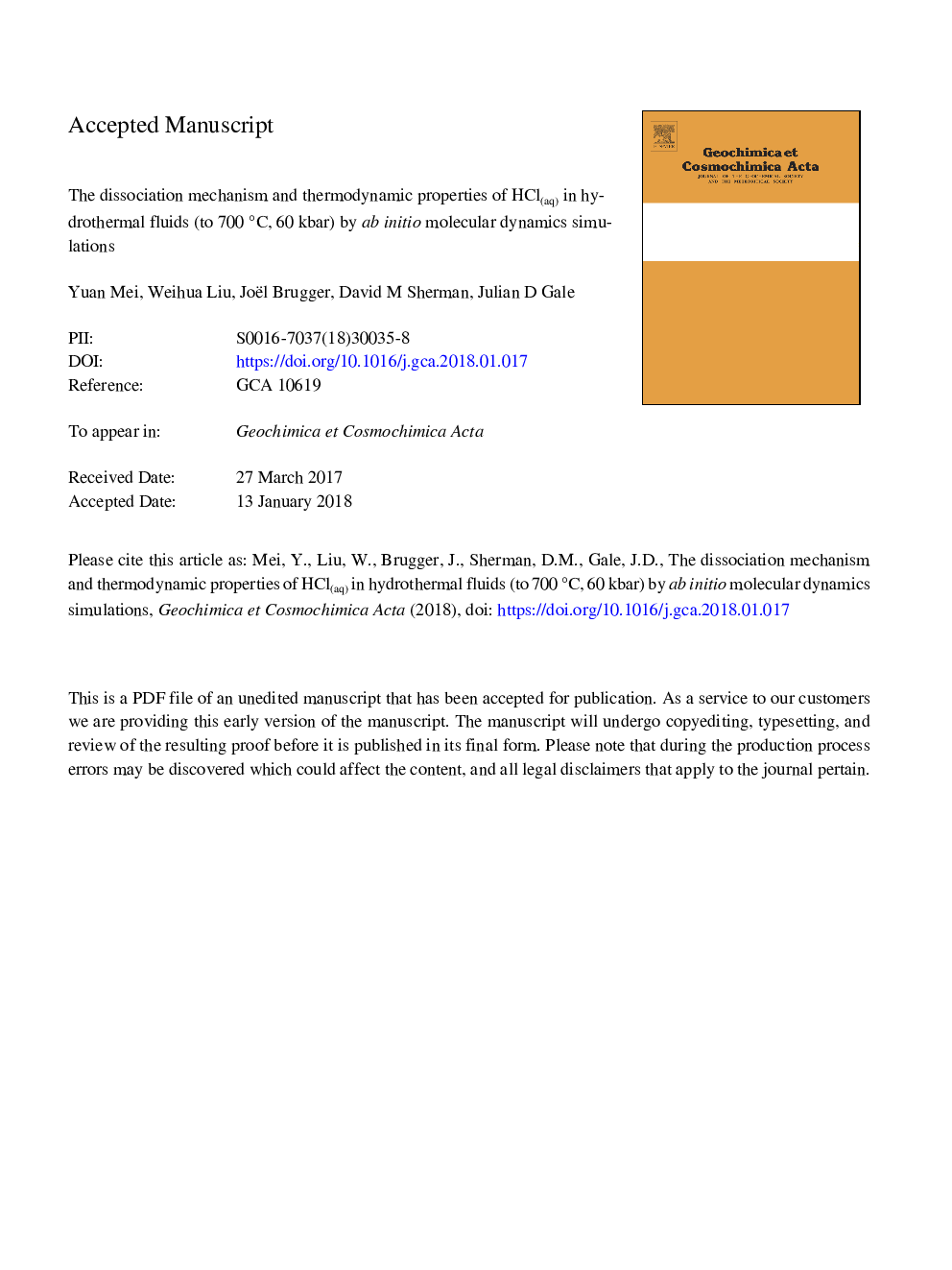| Article ID | Journal | Published Year | Pages | File Type |
|---|---|---|---|---|
| 8910825 | Geochimica et Cosmochimica Acta | 2018 | 55 Pages |
Abstract
Our results predict that HCl(aq) tends to associate with increasing temperature, and dissociate with increasing pressure. In particular, HCl(aq) is highly dissociated at extremely high pressures, even at high temperatures (e.g., 60â¯kbar, 600-700â¯Â°C). At 25â¯Â°C, the calculated logKd values (6.79â¯Â±â¯0.81) are close to the value (7.0) recommended by IUPAC (International Union of Pure and Applied Chemistry) and some previous experimental and theoretical studies (Simonson et al.., 1990; Sulpizi and Sprik, 2008, 2010). The MD simulations indicate full dissociation of HCl at low temperature; in contrast, some experiments were interpreted assuming significant association at high HCl concentrations (â¥1â¯m HCltot) even at room T (logKd â¼0.7; e.g., Ruaya and Seward, 1987; Sretenskaya, 1992; review in Tagirov et al., 1997). This discrepancy is most likely the result of difficulties in the experimental determination of minor (if any) concentration of associated HCl(aq) under ambient conditions, and thus reflects differences in the activity models used for the interpretation of the experiments. With increasing temperature, the discrepancy between our MD results and previous experimental studies, and between different studies, becomes smaller as the degree of HCl association increases. The MD simulations and available experimental studies show consistent results at hydrothermal conditions (300-700â¯Â°C, up to 5â¯kbar). The new thermodynamic properties based on the MD results provide an independent check of the dissociation constants for HCl(aq), and the first dataset on HCl dissociation in high P-T fluids (up to 60â¯kbar, 700â¯Â°C) beyond available experimental conditions. Our results will enable prediction of the role of HCl in controlling element mobility in deep earth hydrothermal systems, including fluids associated with ultra-high pressure metasomatism in subduction zones.
Related Topics
Physical Sciences and Engineering
Earth and Planetary Sciences
Geochemistry and Petrology
Authors
Yuan Mei, Weihua Liu, Joël Brugger, David M. Sherman, Julian D. Gale,
